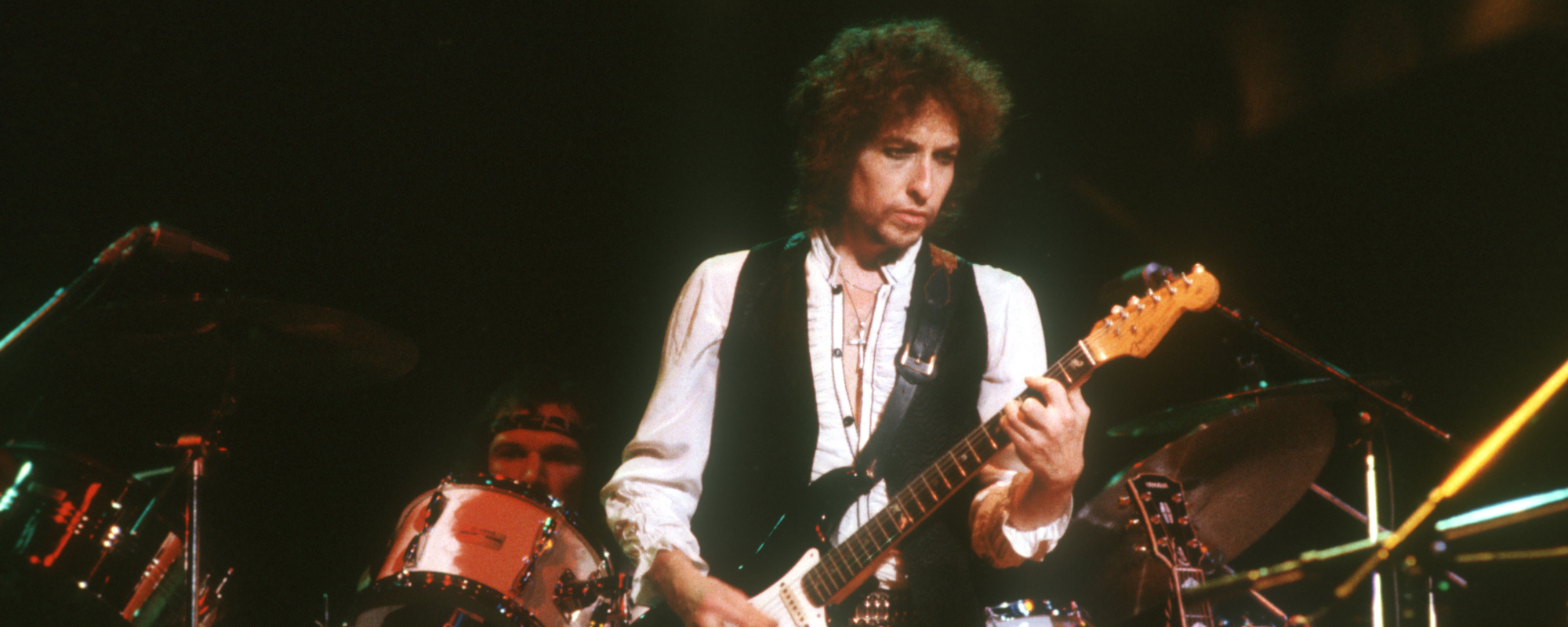Who are we to question Bob Dylan? And yet…you can’t deny that Dylan has been somewhat notorious throughout his career for leaving masterworks off the albums for which they were originally recorded. To be fair, he’s been kind enough to eventually release these songs, usually as part of his ongoing Bootleg Series.
Videos by American Songwriter
As a result, we now can sit around and wonder what his reasons were for initially shunning these songs. Was he worried about thematic unity? Did he have concerns about how the songs were recorded? Or was it just Dylan being Dylan, reminding us all that we’ll never quite be able to figure him out, no matter how hard we try? Whatever the answer, here are five examples from his illustrious career when his leftovers were filling enough to satiate us all.
1. ”She’s Your Lover Now” (originally recorded in 1966)
Dylan was in the midst of his most hyper-productive era when he took a few shots at recording this track for his 1966 masterpiece Blonde on Blonde. There was a solo piano take and then a full-band effort, the latter of which likely included several members of what would become The Band. It’s that latter version that resonates, if only because Dylan seems to be hustling to try to keep up with the swirling music, breathlessly getting everything off his chest about his former lover and her new guy. So much so that he eventually messes it all up, causing the recording to break down before the final verse. But what’s left behind is plenty fantastic, with Dylan rifling off devastating one-liners while still sounding wounded about the way everything broke down.
2. “I’m Not There” (originally recorded in 1967)
Technically, we could include any number of songs from The Basement Tapes sessions on this list, as they weren’t originally released by Dylan. But many were covered soon enough by artists of all stripes, including The Band, who were backing Dylan in the first place. “I’m Not There” was too mysterious for anyone to do a cover worth a darn. After all, nobody has ever been able to completely tell what Dylan is singing at certain points in the song, as he was most likely pulling words out of the air. And yet what we can understand is as haunting as it gets, especially the refrain of I’m not there, I’m gone, which says as much about the elusiveness of Dylan as any lengthy biography or critical treatise ever could.
[RELATED: Making the Case for Bob Dylan’s Initially-Maligned 1978 Album ‘Street-Legal’]
3. “Blind Willie McTell” (originally recorded in 1983)
This one is not only the greatest of Bob Dylan outtakes, but it’s on the very short list of finest Dylan recordings of all time, especially in the piano (played by Dylan) and acoustic guitar (played by Mark Knopfler) version that eventually wound up on the Bootleg Series. Infidels was a strange album for Dylan in that arguably the best two songs didn’t make the cut (read on to No. 4 on this list). As far as “Blind Willie McTell” is concerned, it’s a masterful compendium of imagery taken from the history of the American South, tied together by Dylan’s tributes to the power of the titular blues performer. Dylan has played it often on tour over the years, so maybe he understands that he made a mistake in not giving it a wider audience when it was first put in the can.
4. “Foot of Pride” (originally recorded in 1983)
The somewhat forgettable “Union Sundown” is the song that Dylan chose to include on Infidels over both “Blind Willie McTell” and this fantastic track that benefits from some of Mark Knopfler’s grittiest guitar efforts and Dylan’s cathartic harmonica wails. It’s a song not unlike early-days stuff like “It’s Alright Ma (I’m Only Bleeding),” where Dylan takes stock of the entire world with clear eyes or uncontained fury. His targets here include money-gouging universities and ruthless businessmen, among many others, and he doesn’t exactly leave us with a lot of hope: Ain’t nothing left here partner, just the dust of a plague. “Foot of Pride” might not be cheerful, but it’s exhilaratingly eloquent and honest.
5. “Red River Shore” (originally recorded in 1997)
It’s hard to quibble too much with Time Out of Mind, Dylan’s 1997 masterpiece that represented a massive creative comeback for him. But no less a luminary than keyboardist Jim Dickinson, who played on the sessions, felt that this tragic ballad was the best song recorded in that time. When the song finally came to light on the Tell Tale Signs collection in 2006, it was a revelation that made Dickinson’s pronouncement sound pretty close to accurate. “Red River Shore” is about a love so deep that it eventually engulfs the identity of the person who loses it. It’s one of Dylan’s best ever songs of heartbreak, and considering how many great ones there have been, that’s saying something.
Photo by Michael Ochs Archives/Getty Images













Leave a Reply
Only members can comment. Become a member. Already a member? Log in.